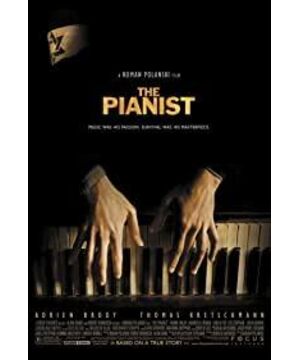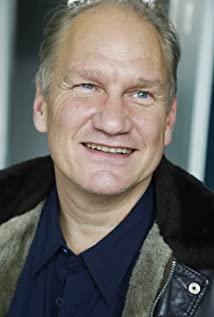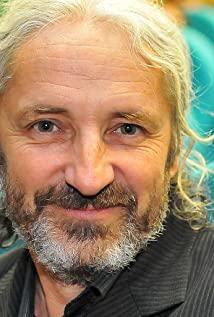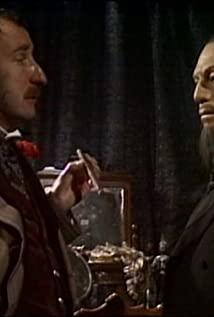It is not difficult to understand this movie, we only need to do two things well. First, adjust the viewing angle. Second, understand the historical background.
First of all, the co-production of "perspectives" can perceive the profound meaning of the film. First of all, this is not a war hero movie. It is not a patriotic fighter who defends the country or a humanitarian hero of Schindler's style. It depicts the personal experience of an ordinary Jew "surviving" during genocide. Secondly, the important thing in "The Pianist" is not the pianist, but the Jewish Warsaw in World War II. It is the bits and pieces he saw and experienced. In other words, the eyes of the pianist are the camera of the director Polanski, recording the tragic experience of the Jews in Warsaw in World War II, and the waves that came up when the torrent of World War II flowed over an ordinary person.
This kind of narrative perspective allows the audience to see how real pain the grand history falls on a living individual, rather than a simple series of death figures. At the same time, the encounters of individuals reflect the disasters of a group and the "systematic evil" at a more macro level. If you are looking for a Chinese film with similar interests, it may be the film "Alive" based on Yu Hua's novel and directed by Zhang Yimou.
Secondly, Poland’s history of World War II can help us understand the grand format of the film. When it comes to the persecution of Jews by Nazi Germany, most people think of it as a concentration camp, and most of the previous films have focused on this. However, most of the systematic genocide in concentration camps occurred after 1942. Before this, it was the persecution of Jews in daily life in various countries, many of which were little known (this is also the reason why "Anne's Diary" shocked people).
Before World War II, Jews in Warsaw accounted for 30% of the city's total population, and they lived scattered throughout the city and engaged in all walks of life. The protagonist of the film was originally a pianist from a radio station in Warsaw. He has a family of 6 and lives well. In September 1939, Germany invaded Poland. At the beginning of the film, a family was sitting in front of the radio. They cheered when they learned that Britain and France had also declared war on Germany. However, when they took to the streets the next day, they saw a large number of German troops. In history, Britain and France only verbally declared war due to their alliance with Poland, but did not take any actual military action to fight back against Germany from the west (opening up the second battlefield is a later thing). The appeasement policy made Germany free from the pressure of the enemy on both sides. , Combined with the non-aggression agreement with the Soviet Union, the German army easily won Warsaw. To celebrate the victory, Hitler also held a large-scale military parade in Warsaw and began the persecution of Warsaw Jews. In this matter, Poles still have a grudge against Britain and France.
The persecution of Jews by the Nazi government was not a mass murder, but intensified step by step.
In the beginning it was just humiliation. At the beginning of the film, the pianist’s father walked down the street and was stopped by a German soldier and slapped him, berating him for not being allowed to walk on the sidewalk. Then there was labelling. When his father read the newspaper, he learned that the government ordered all Jews to wear inlays. There is a Jewish armband with a "dastar", and those who don't wear it will be severely punished (Trump satirizes Hillary Clinton's ad for using a six-pointed star icon, which is condemned as "anti-Semitism", that is, anti-Semitism, literally anti-Semitism People, that is, the ethnic family of the Jews).
Immediately after the restrictions in public places, the pianist met a Polish female musician on the way and was going to have coffee together, but there was a sign on the door of the coffee shop saying that Jewish people were forbidden to enter. The girlfriend expressed indignation. The pianist said that the park and the This is already the case on the tram. This is the real scene in Warsaw that year. Jews were forbidden to enter all public places where Germans might appear.
Then came group isolation. In October 1940, the Nazi government ordered all Jewish residents in Warsaw to move to specific areas of the city within a limited time. Although extremely dissatisfied, the pianist’s family still packed and followed the large group into the quarantine area. At first, everyone didn’t know they were quarantined, and only when the family found out that they started building walls downstairs. This was the later famous Warsaw Ghetto. The locals called "Warsaw Ghetto". More than 400,000 Jews were isolated in two small areas of only 3.4 square kilometers. In the film, the protagonist walks over a cross-street bridge, which is the only passage connecting the two isolated areas. Below is the busy traffic of normal city people, but there is endless darkness at both ends. Today’s Jewish Museum in Warsaw is modeled after the structure of this flyover. Along the tour route, you will also pass a flyover. Below is a simulation of the Warsaw block at that time. The bridge says "We can only have a free look when we pass by here every day. world".
Next comes random killings (random killings). Although the space is small, the resilient Jews in the early stage can barely lead a normal life, with a home, a market and a restaurant, but this is inevitable from the danger of being persecuted at any time. In the movie, the protagonist's family is eating dinner, suddenly a German military vehicle drove into the block, and everyone was busy turning off the lights. This group of German soldiers rushed to the opposite Jewish family, threw the grandfather who could not stand up directly from the balcony, and shot a family at the same time. Such random and indiscriminate killings abounded in the Jewish quarantine at the time, and a German soldier might pull out a few Jews to discourage one day in a bad mood. Everyone lives in fear, wondering if they will be next.
As the quarantine time lengthened, disease, hunger and death appeared in the quarantine area. When the protagonist of the film walks down the street, corpses lying on the ground can be seen everywhere. The most impressive thing is that the pianist saw a hungry passerby robbing an old woman’s rice bowl when he was fishing his brother out of the police station. The ground began to eat wildly, and hunger has reduced the sex and dignity to this level. According to statistics, in the Warsaw quarantine zone, at least 100,000 Jews have died of disease, starvation and random killings. Note that this happened before the massacre in concentration camps.
Along with the quarantine was forced labor. Some Jews with better physique were expropriated to help the Germans build infrastructure or produce war preparations. The pianist has been carrying bricks on artificial ground in Germany for a long time. Because of the manual work, the Germans took care of the food, so this part of the Jews could barely survive, but they could not escape the corporal punishment and killing at any time. On the way home from work, a German military officer stopped the workers and picked out a few randomly and let them lie on the ground. They shot them all the way. Finally, after the bullets in the gun were shot, a Jewish worker was left lying on the ground. Changed the magazine very leisurely and solved him.
The last is the extinction of the ethnic group. On the surface, the Germans said that they were letting the Jews out of the quarantine area, so many Jews were full of joy at the beginning, including when the pianist got the certificate and led the family to set off, they also felt that they had new hope. While waiting to get on the train, the old father bought a piece of candy, carefully cut it into six pieces, and gave it to the family with shaking hands, but he didn't expect it to be the last reunion dinner for the family. According to historical records, since the summer of 1942, at least 250,000 Jews in the Warsaw Exclusion Zone have been sent to a concentration camp called "Treblinka" one after another, with few survivors.
Therefore, it can be seen from the above that the persecution of the Jews by the Germans was carried out step by step. They did not tell the Jews "I am going to kill you" at the beginning. Many Jews even think that these policies are temporary and have always been patient. The mentality that forbearance will pass (in the past thousand years, European Jews have survived this way). Even when they boarded the train to the concentration camp, many Jews did not know that they were going to die, so when the pianist was dragged out of the crowd by his Jewish police friend, he insisted on returning to the train. My friend said, "What do you think I am doing, I am saving you, run away".
Sociologist Bowman proposed in his "Modernity and the Holocaust" that the programmatic and meticulous division of labor in modern industrial production makes the participants on the entire assembly line not know that what they are doing is in this product. So when this product is a massacre, the escort, the person who changes clothes, the person who shaves his head, the person who is in charge of the cell, the person who is oily soap does not know what they are doing, they just complete themselves on the water table The job, and each division of labor adds up to a systematic mass murder. In the same way, dividing genocide into escalating procedures such as humiliation, marking, restriction, isolation, indiscriminate killing, forced labor, mass killings, etc., helps to eliminate the vigilance and intuition of resistance of the extinction target, while gradually depriving them of resistance. The conditions and the will to dispel its resistance. This is the most terrifying part of the modern massacre.
But the Jews in Warsaw did not sit still. Historically, in April 1943, the famous "Warsaw Getto Uprising" (Warsaw Getto Uprising) broke out in Warsaw. After months of preparation and planning, the underground Jewish organizations in the quarantine area fought back against the Germans, but they were so powerful that they were quickly suppressed. At least 13,000 Jews were brutally killed, and the Germans burned a large number of them. Jewish quarter. In the film, the pianist met a member of the resistance organization on the construction site and helped the Jewish resistance organization deliver guns through the opportunity of purchasing potatoes. The pistols they threw into the separation wall on their way to the end of the day were used during the uprising. Later, with the help of a friend, the pianist moved to a building opposite the quarantine area. One day he saw a group of German soldiers attacked by guns in the quarantine area. Later, the Germans retaliated by tanking. This is the Warsaw Jewish in 1943. A corner of the uprising in the exclusion zone.
Of course, the original works and movies also record many of the evil deeds of the Jews themselves. When the entire ethnic group is persecuted, there are still people who look to "money" in everything. When the pianist was performing in the restaurant, two Jewish guests asked him to pause. The reason was that the piano was too noisy and they had to listen to the sound of the coins to judge the authenticity; there was smuggling in the quarantine area due to the shortage of supplies, so the children would not hesitate to burrow into the ground. Things were transported outside the wall, so much so that once a pianist saw a child got stuck in a hole and killed by a German soldier at that end; even on the train at the end, there were children waiting in the square to shuttle and sell sugar. , A sugar actually cost 20 zloty (Polish currency), the old father said angrily, "I don't know what to do with money at this time?". At the same time, some Jews joined the ranks of Germans in order to survive and act as security police to oppress their own people. These are all historical facts, and human nature is also distorted in extreme political environments.
Historically, Warsaw’s second revolt against the German army occurred in 1944. It was jointly launched by the Polish underground military organization (known as the "Polish National Army", Polish Home Army) and the Polish government-in-exile in London. The 1944 Warsaw Uprising (Warsaw Uprising). The time of the united uprising in the city was at 5 pm on August 1, 1944, and the code name was W time (that is, Warsaw time) at 5 o'clock. In addition to rebelling against Germany, the uprising was also to block the Soviet Union’s control of Warsaw. At that time, the Soviet Red Army had reached the city of Warsaw. The Poles wanted their own independent country, so they launched the uprising first. For a long time, the Soviet Red Army failed to invade Warsaw after the First World War. You can see the movie "Warsaw Defense 1920").
Later in the film, the pianist moved to hide in a residential building opposite the German Army Hospital. A female friend who came to visit one day told the pianist that "we Poles are about to resist." Later, one day he saw a group of people attacking the German military hospital on the windowsill, shooting and killing many German soldiers, and the hospital was eventually forced to move. The German army once again drove tanks and fired frantically on surrounding residential buildings. The pianist was almost killed and was forced to hide in the abandoned hospital opposite. This was a corner of the 1944 Warsaw Uprising. This uprising was also the largest military resistance movement on the European battlefield.
The Germans were still struggling with the beasts, and the uprising was madly counterattacked by the Germans. Hitler threatened to wipe Warsaw from the earth completely. Britain, France and the Soviet Union once again sat and watched. The uprising lasted for 63 days and finally failed. Warsaw was bombarded and 85% of the buildings were razed to the ground, including the old city, palaces, and churches. Warsaw was the European capital that was most completely destroyed in World War II, killing 150,000 to 200,000 civilians at the same time. In the film, the German army used fire-breathing to further clean up the remnants and burn down the buildings, which are also recorded in historical photos. In the end, the pianist was forced to escape from the hospital by muskets and came to a large area of bombed ruins. This is the Warsaw neighborhood after the German army destroyed the city. Regarding the 1944 Warsaw Uprising, you can see the Polish film "Blood Bath Warsaw 1944" (Miasto 44), which was released in 2014.
Due to the suppression of the Soviet Union, the Warsaw Uprising has been characterized by the authorities as a group of politicians’ selfish actions during the communist period in Poland. Warsaw City destroyed their hands. Many soldiers of the insurgents died not by German guns but by German guns. The prison of the Soviet Union. However, after the dramatic changes in Eastern Europe and the disintegration of the Soviet Union, the newly elected government rehabilitated the incident, built monuments throughout the city, and built a special "Warsaw Uprising Museum." Now every year on August 1st, Poland will hold commemorative activities all over the country. The sound of 5 o'clock in the afternoon will give the whole city of Warsaw a minute of silence. For the 72nd anniversary of this year’s commemoration, I happened to be in the Warsaw Uprising Monument Square and watched the crowd singing the national anthem in unison. The scene was moving.
Finally, let's talk about the German officer. Although not as shocking as "Schindler's List", the story of the German officer is also touching and historical facts. According to subsequent investigations, he not only saved the pianist, but also used his position to save many people. He was originally a teacher in a school in Germany and the father of several children. There is a scene in the film where he is reviewing documents, and there is a photo of him with his wife and children on the desk. Not only does he like music, he also put a can opener in the package when delivering food to the pianist, because he had seen the pianist smashing a jar of pickled cucumbers (Poles especially like to eat pickled cucumbers). How gentle, delicate, and full of human touch this German officer is on weekdays. The huge machine of war makes him a part of it, but his taste and humanity are still not lost.
Arendt analyzed the atrocities committed by the Nazi Germans in the book "Eichmann of Jerusalem", which boiled down to a kind of "banal evil." To put it simply, those German soldiers who humiliated, beaten, and massacred Jews took off their military uniforms. They may be ordinary people on the streets of Germany. Mother"), but the evil system gave them the opportunity to do evil, and at the same time the mediocre they lost the ability to reflect in the face of structural evil. Their existence is not evil, but eventually become a part of the powerful evil machine. If you lose reflection, this "banal evil" may also be you and me. But what Arendt did not mention is that there is also a kind of "banal good" in addition to the "banal evil". Although as individuals, we cannot change the powerful evil system and system for a while, but in a small part of the system, In the link, we can still hold to the "goodness of human nature." We are mediocre, but mediocrity and small goodness may also save a person’s life in a very evil environment, just like this German officer, like Schindler, like the intelligence in the movie "Eavesdropping Storm." member.
"We are not each other's enemy, our enemy is war."
Finally, it’s worth mentioning that at the beginning of the film, what the pianist played during radio recording and at the end of the film at the Grand Theatre are all Chopin’s piano music. Church of the Cross. There is a statue in front of the church with Jesus Christ hunched over his cross. This scene also appeared in the pre-war Warsaw street scene at the beginning of the film.
I have thoughts, I hope it will be helpful for everyone to understand the film, and I look forward to your supplements.
Central Plains Lion King
on Tuesday, August 2, 2016
written on the train from Warsaw to Berlin
View more about The Pianist reviews











